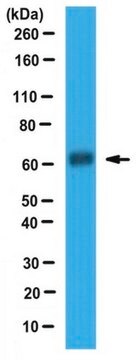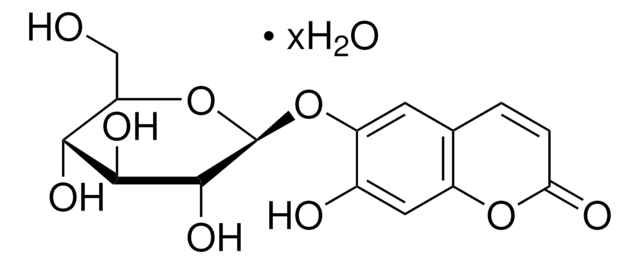F5879
Ammoniumeisen(III)-Citrat
reagent grade, powder
Synonym(e):
Ammonium ferric citrate, Ferric ammonium citrate
About This Item
Qualität
reagent grade
Qualitätsniveau
Form
powder
Zusammensetzung
Iron, 16.5-18.5%
Kationenspuren
Fe: 16.5-18.5%
SMILES String
N.OC12CC(=O)O[Fe](OC(=O)C1)OC(=O)C2
InChI
1S/C6H8O7.Fe.H3N/c7-3(8)1-6(13,5(11)12)2-4(9)10;;/h13H,1-2H2,(H,7,8)(H,9,10)(H,11,12);;1H3/q;+3;/p-3
InChIKey
FRHBOQMZUOWXQL-UHFFFAOYSA-K
Suchen Sie nach ähnlichen Produkten? Aufrufen Leitfaden zum Produktvergleich
Verwandte Kategorien
Allgemeine Beschreibung
Anwendung
Lagerklassenschlüssel
11 - Combustible Solids
WGK
WGK 1
Analysenzertifikate (COA)
Suchen Sie nach Analysenzertifikate (COA), indem Sie die Lot-/Chargennummer des Produkts eingeben. Lot- und Chargennummern sind auf dem Produktetikett hinter den Wörtern ‘Lot’ oder ‘Batch’ (Lot oder Charge) zu finden.
Besitzen Sie dieses Produkt bereits?
In der Dokumentenbibliothek finden Sie die Dokumentation zu den Produkten, die Sie kürzlich erworben haben.
Kunden haben sich ebenfalls angesehen
Unser Team von Wissenschaftlern verfügt über Erfahrung in allen Forschungsbereichen einschließlich Life Science, Materialwissenschaften, chemischer Synthese, Chromatographie, Analytik und vielen mehr..
Setzen Sie sich mit dem technischen Dienst in Verbindung.

